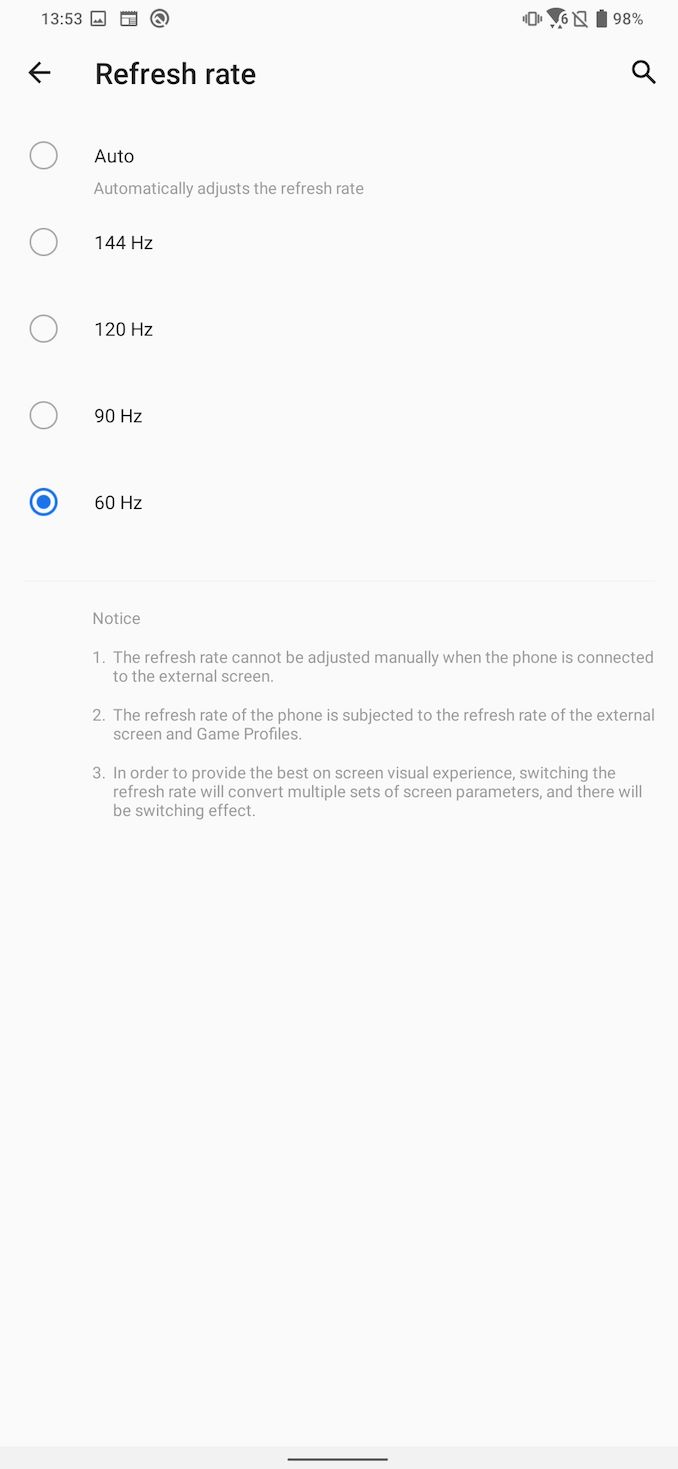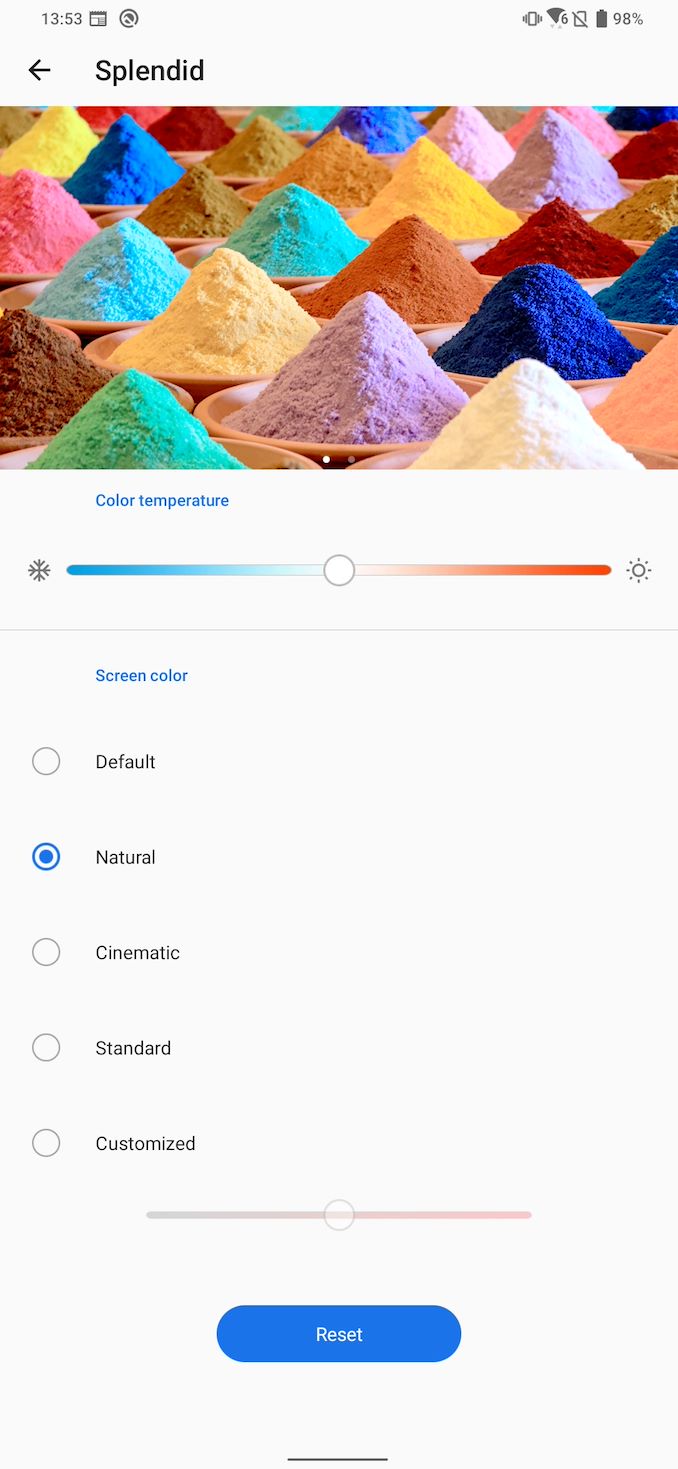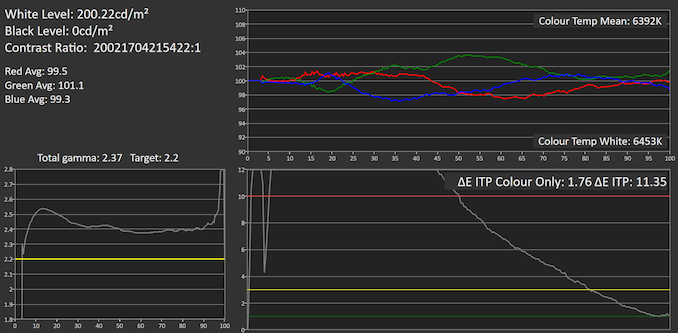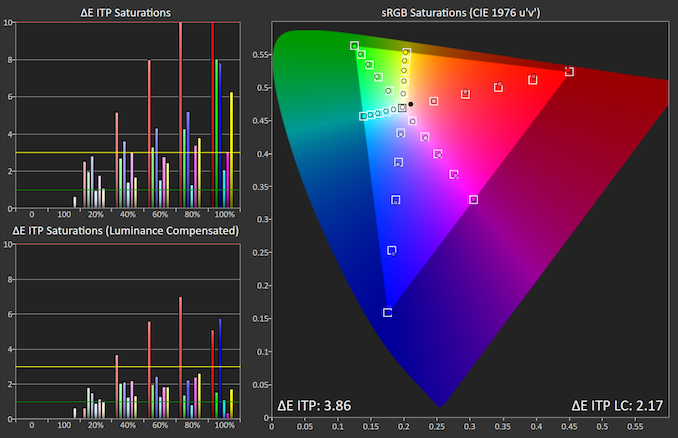The ASUS ROG Phone III Review: A 144Hz 6000mAh Beast With Caveats
by Andrei Frumusanu on August 28, 2020 9:00 AM EST- Posted in
- Mobile
- Smartphones
- Snapdragon 865
- ROG Phone III
Display Measurement
The display on the ROG Phone III is an OLED panel that features a 1080p resolution and a very high refresh-rate of up to 144Hz. Although it was something quite extraordinary back in 2019, in 2020 it’s doesn’t showcase the same kind of spec-list advantage versus the 1440p 120Hz panels by some other competitors in the market.
The phone gives you the options to operate at 60, 90, 120 or 144Hz which is quite wide array of selections. Unfortunately, much like other super-high refresh-rate panels on the market, going beyond 90Hz comes at a quite larger power consumption cost.
Colour settings on the ROG Phone III are very varied and customisable, giving you four different predefined display gamut selections. The “standard” profile is the calibrated sRGB target with a default colour temperature near 6500K, so that’s what we measured and what I would recommend users to choose when looking for accurate display colours.
We move on to the display calibration and fundamental display measurements of the ROG Phone III screen. As always, we thank X-Rite and SpecraCal, as our measurements are performed with an X-Rite i1Pro 2 spectrophotometer, with the exception of black levels which are measured with an i1Display Pro colorimeter. Data is collected and examined using Portrait Display's CalMAN software.

In terms of brightness, the ROG Phone III fares well, with manual brightness reaching up to around 423cd/m², whilst when in adaptive brightness mode this boosts up to 652cd/m² full-screen white (100% APL) when under bright ambient light conditions.
In the standard display profile, colour temperature is quite good at the high levels, tracking whites at 6453K. At the mid-levels there’s a bit too much greens.
Although greyscale colour accuracy is quite excellent with a dEITP of only 1.76, the overall error rate when including luminosity is quite bad in our results here, and the reason for that is that the phone is targeting a much higher gamma of around 2.4. Unfortunately this aspect is valid for all colour profiles of the phone and there’s no way to fine-tune or change this.
What this means is that mid- and low-levels will appear darker than they are meant to.
Saturation accuracy against the sRGB target is excellent, with only minor deviations which are exaggerated by the higher gamma target of the display profile.
The Gretag MacBeth chart of common colour tones and skin tones is also quite accurate in terms of colour saturations and hues, however the off-target luminosity because of the higher gamma is the main reason the total dEITP error rate is quite high at 8.57.
Overall, the screen of the ROG Phone III is excellent, although not class-leading. It’s not quite as high resolution or as bright as some competitors, but it still fares very well, and it’s currently amongst a very small number of phones which can claim a 144Hz refresh-rate, although the actual benefits of that over 120Hz devices is rather minor.
Colour accuracy is good, although you’d have to get used to that higher gamma target which produces darker colour tones.

















71 Comments
View All Comments
techgadgetgeek - Friday, September 18, 2020 - link
Would be great if we got some sort of review on cell reception quality,cell reception strength, the same for the Wifi and for GPS signal locking strength/accuracy.